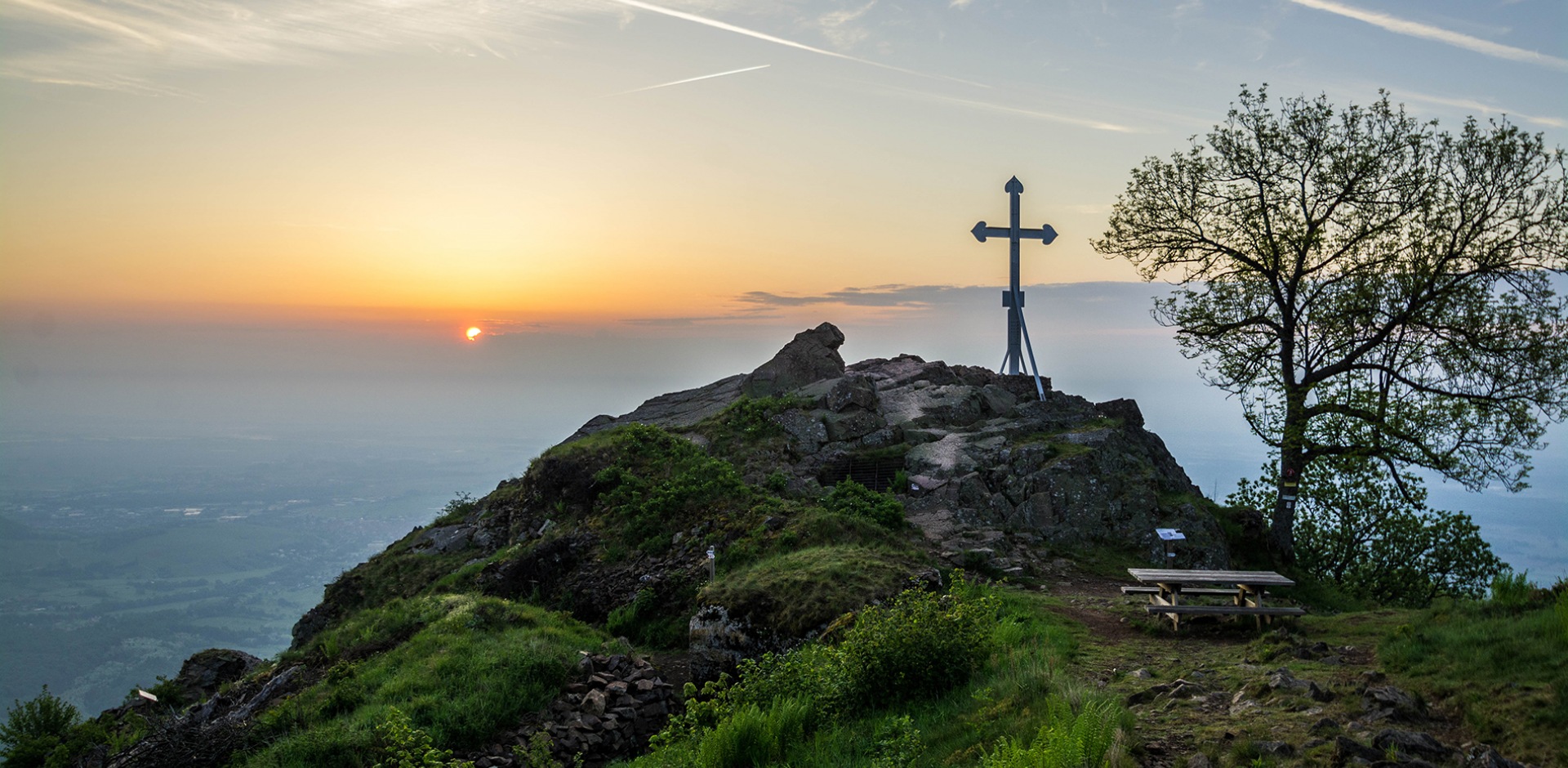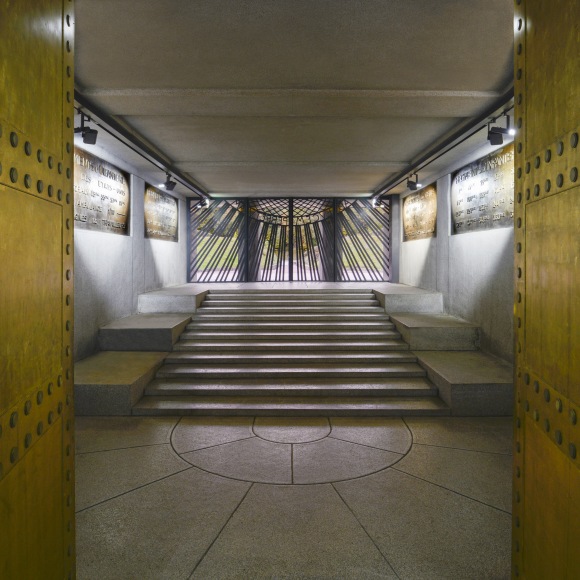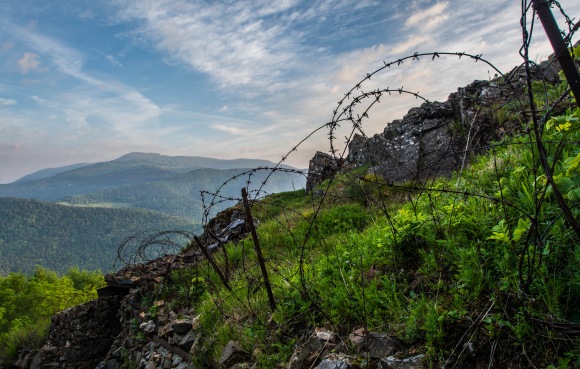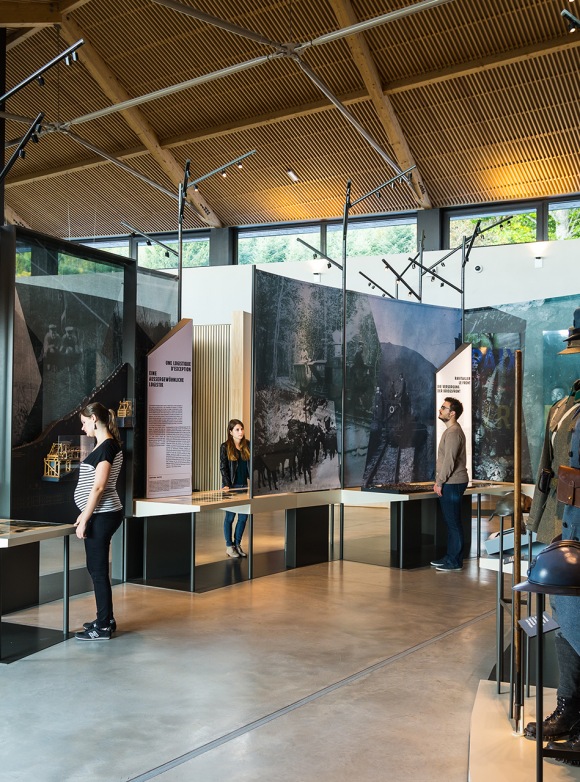The National Monument of Hartmannswillerkopf
The "Hartmannswillerkopf 14-18" National Monument is one of four French national monuments commemorating the Great War. The others are at Douaumont in the Meuse, Dormans in the Marne and Notre-Dame-de-Lorette in the Artois region.
The monument was built in remembrance of the armed struggle that took place here during the First World War and was designed by the architect Robert Danis and the sculptor Antoine Bourdelle. This decidely original structure was inaugurated in October 1932 by the then President of the French Republic, Albert Lebrun.



